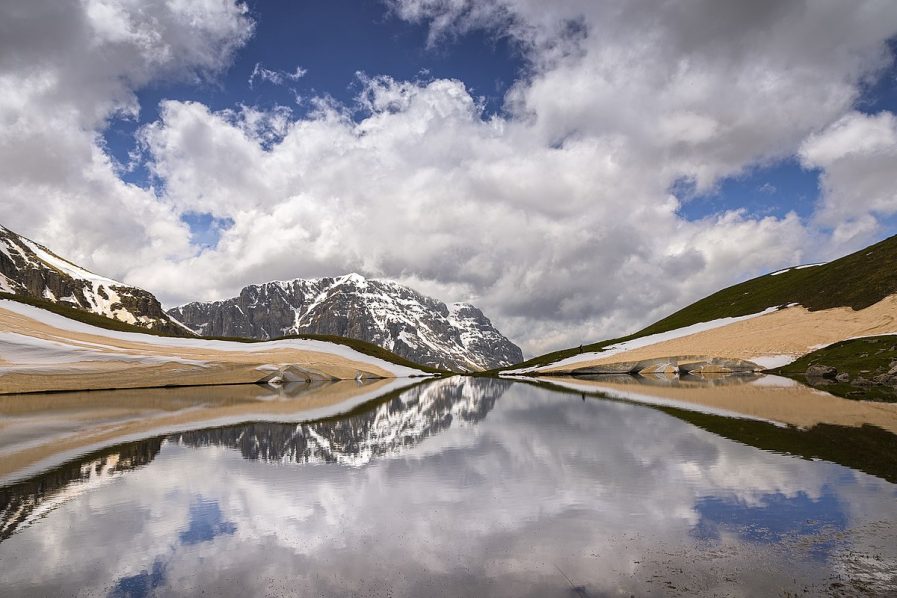
Although the world is filled with 75% of water, less than 4% of it is covered by lakes. However, there are some fascinating varieties among the lakes of the world.
These are some of the most spectacular and unusual lakes seen around the world;
Dragon Lake, Greece
Drakolimni is the name of several alpine or subalpine lakes in the region of Epirus in northwestern Greece, which is also so-called Lake Nacimiento, because of the dragon-like shape created by the positions of its arms.
According to local folktales, the lakes used to be inhabited by dragons that fought each other by throwing pines and rocks and thus, created the peculiar landscape and gave their names to the lakes.#
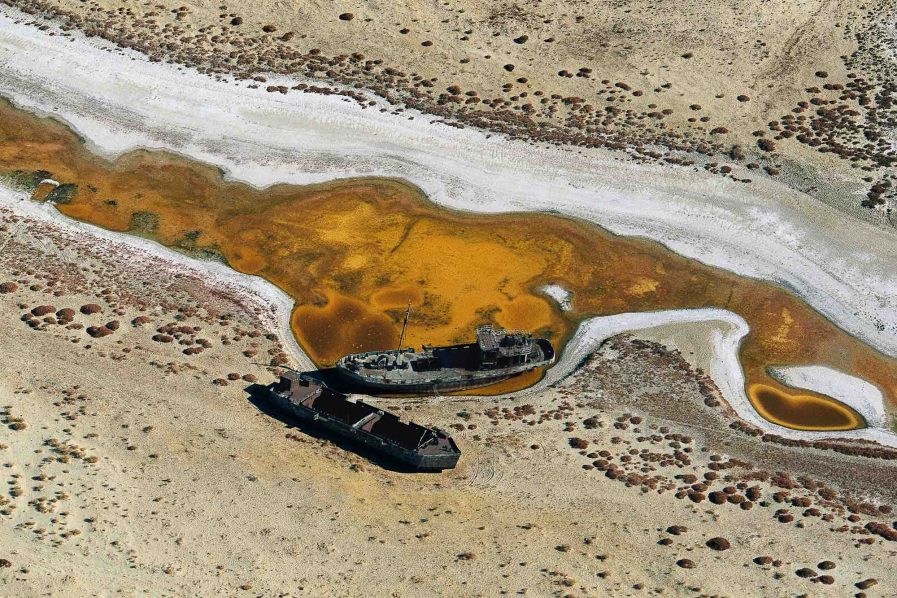
Aral Sea, Kazakhstan
This was an endorheic lake which began shrinking in the 1960s and had largely dried up by the 2010s. The name roughly translates to “Sea of Islands”, referring to over 1,100 islands that had dotted its waters in time past. Formerly the fourth largest lake in the world with an area of 68,000 km2 (26,300 sq mi), the Aral Sea began shrinking in the 1960s after the rivers that fed it were diverted by Soviet irrigation projects. By 2009, the southeastern lake had disappeared and the southwestern lake had retreated to a thin strip at the western edge of the former southern sea. Satellite images by NASA in August 2014 revealed that for the first time in modern history, the eastern basin of the Aral Sea had completely dried up.
The shrinking of the Aral Sea was referred to as “one of the planet’s worst environmental disasters”. The region is heavily polluted, with consequent serious public health problems. UNESCO has added historical documents concerning the Aral Sea to its Memory of the World Register as a resource to study the environmental tragedy.
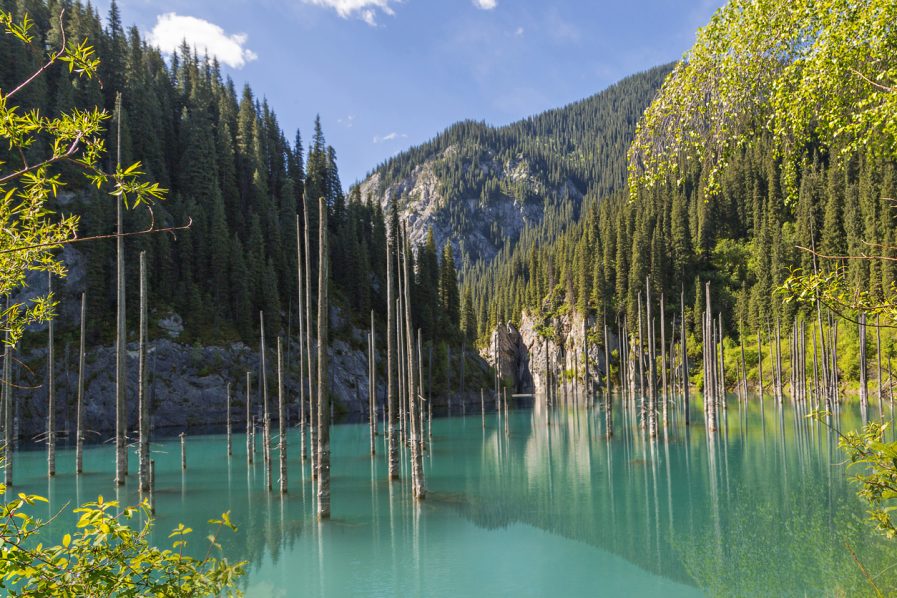
Lake Kaindy, Kazakhstan
Lake Kaindy, which means the “birch tree lake” or “landslide” is a 400-meter-long (1,300 ft) lake. The lake was formed as the result of a major limestone landslide triggered by the 1911 Kebin earthquake, forming a natural dam. It blocked the gorge and was filled with the mountain river water. Lake Kaindy is about 400 meters long, reaching depths of nearly 30 meters at its deepest point. Altered by limestone deposits, the water maintains a bluish-green colour.
What makes the lake so unique is the fact that after the emergence of a natural dam that blocked the gorge, the water that filled the dam formed the lake and did not destroy the spruce trees growing in this place along the river. The lake surface itself changes colour regularly and is often a lovely blue colour. This strange colour is caused by lime and other minerals that were in the water a hundred years ago. But as soon as you get closer to the lake, the water becomes crystal clear. Despite the low water temperature, Kaindy Lake is popular with diving enthusiasts and in recent years it has become a popular international tourist destination.
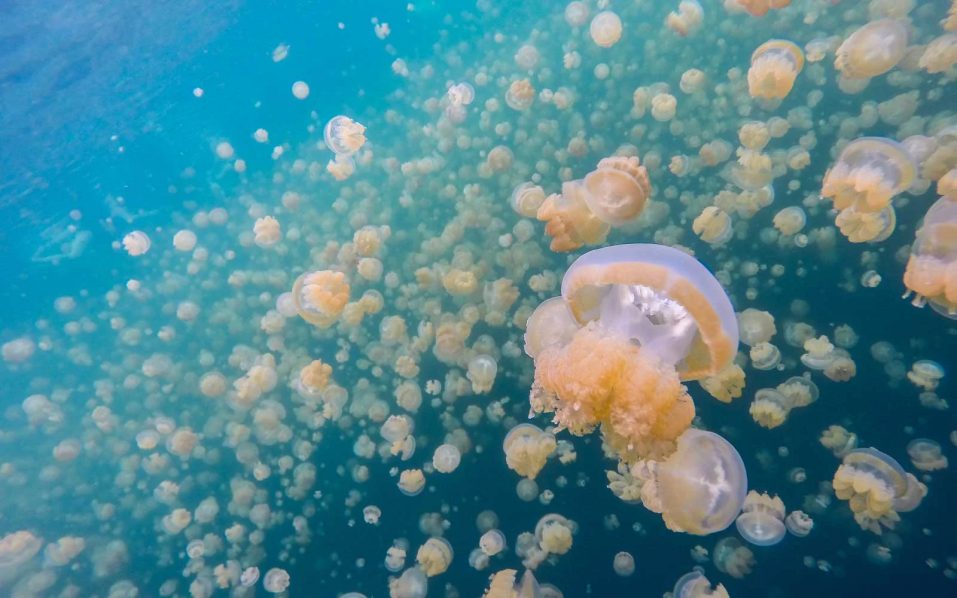
Jellyfish Lake, Palau
Although jellyfish are known for the agonising sting they impact on divers, this marine lake located on Eil Malk Island in Palau is a home to them, with millions of golden jellyfish migrating horizontally across the lake daily. Jellyfish Lake is connected to the ocean through fissures and tunnels in the limestone of an ancient Miocene reef. The golden jellyfish and possibly other species in the lake have evolved to be substantially different from their close relatives living in the nearby lagoons.
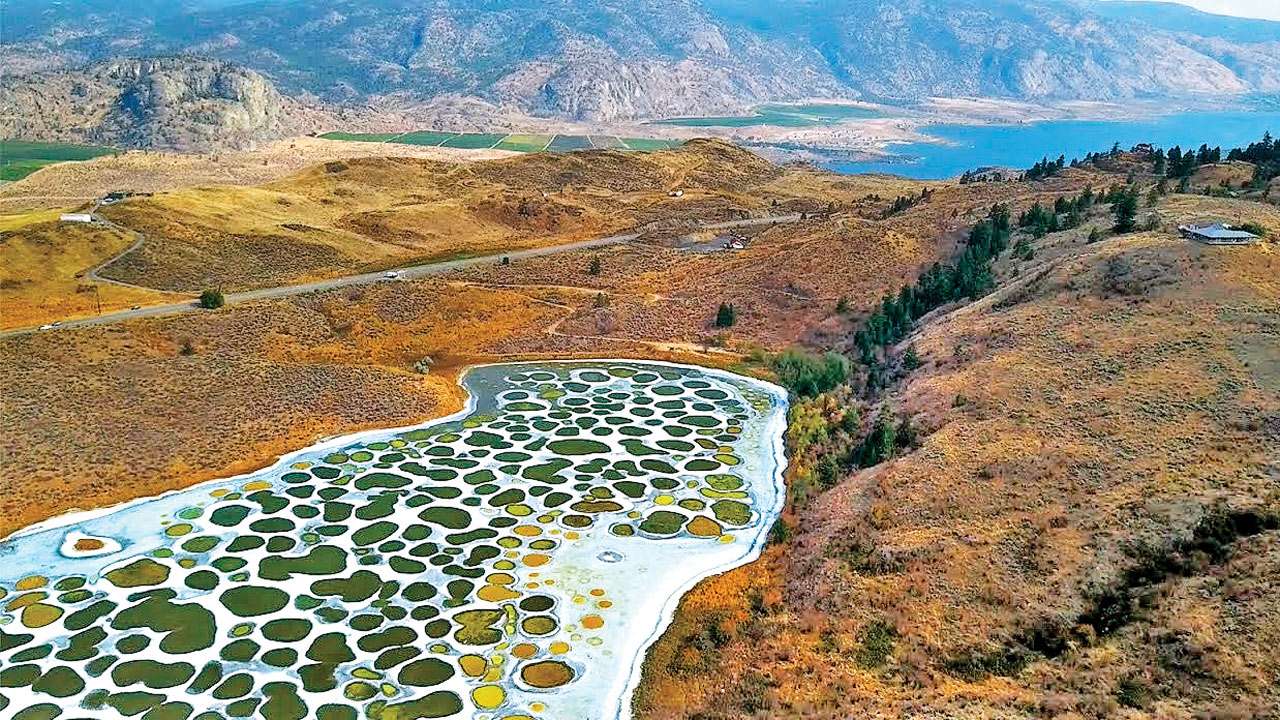
Spotted Lake, Canada
The Spotted Lake is richly concentrated with various minerals. Most of the water in the lake evaporates over the summer, revealing colourful mineral deposits. Large ‘spots’ on the lake appear and are coloured according to the mineral composition and seasonal amount of precipitation. The lake remains revered as a sacred site used to provide therapeutic waters for centuries while in the summer, the remaining minerals in the lake harden to form natural “walkways” around and between the spots.
[ad unit=2]








